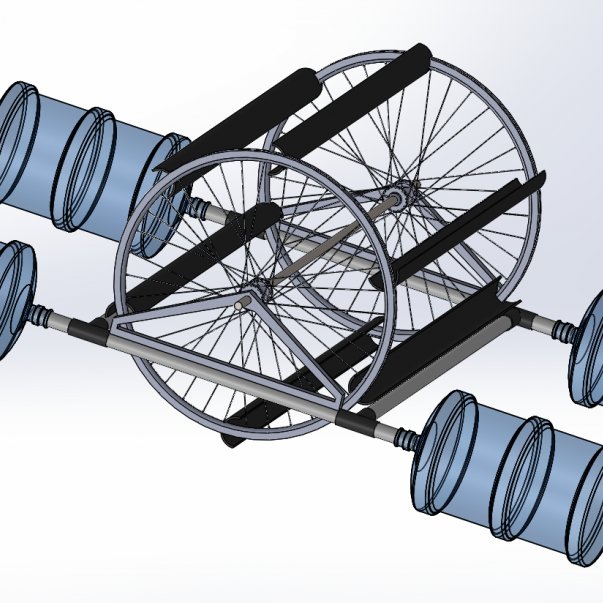
DIY renewable energy
Dal engineering students construct a paddle-wheel turbine
What do an old bike, water jugs, a steel rod, a generator and a car battery have in common? A group of mechanical engineering students at Dalhousie are using all of them as part of a renewable energy project.
They’re also using a few other materials and bits of hardware, but the essence of their project is simple: it’s easy to replicate, it’s affordable and it’s small. It’s a current-powered river turbine.
When completed, the paddle-wheel turbine will be the size of a coffee table and will produce about 500 watts of electricity. That’s enough to power a boom box, or about nine incandescent light bulbs, says Joe Richard, a fifth-year mechanical engineering student and president of the Dalhousie Renewable Energy Society (DRES).
This type of turbine could provide a source of power to a remote cabin or research station. Richard says it will help demonstrate that anyone can undertake a renewable energy project: for this turbine, there is no special material or software required.
“It should be as simple as a hammer and a screwdriver and maybe a drill and just some off-the-shelf parts,” he says.
Richard wanted to provide students with an opportunity to learn more about the emerging field of renewable energy. “It just what I see as the future,” he says.
With the help of Nigel Herritt and Kirby Page, who are also fifth-year students in the mechanical engineering program, Richard started DRES in the fall of 2016.
Herritt says renewable energy isn’t talked about a lot in school, with the exception of certain electives.
“I think Joe realized that and he wanted to explore it more, he wanted to introduce it to people.”
For Kirby Page, VP communications for DRES, it’s also about attaching his name to something worthwhile.
“I look at the renewables as the emerging field where you’re actually going to be able to put your name to something that’s going to stick,” he says.
While Richard, Page and Herritt occupy leading roles in the turbine project, they say about 10 people have been working on it consistently.
One of the biggest challenges has been to find time for the turbine, between busy schedules and schoolwork.
“I mentioned it at the beginning of the year, I didn’t want this to take precedence over school for anyone, because school is more important,” says Richard.
But at this point, Herritt says all they really need is a full day or two to put the turbine together. Then they plan to put it to the test, during the first week of April.
Being a paddle-wheel turbine, not unlike the wheel on a water-powered mill, most of it will sit above the water, with the blades dipping under the waves.
Herritt says they might try to power some lights, or they’ll simply check the charge on the car battery. “We just want to see that it’s making power and meeting our expectations,” he says.
As all three students are graduating this year, they’re not sure what will happen to the turbine, but they’re considering giving it away to someone who could use it in their cottage, or having it on display at the university.
While the point of the project is to prove a concept, Herritt says, “I hope it inspires students in the future to continue this society.”
Richard says in future years, he could envision projects like a do-it-yourself wind turbine, or a project to harness the heat of the sun. But that’ll be up to next year’s members.
Mira Chiasson writes in partnership with the Dalhousie Gazette and the Dalhousie Student Union Sustainability Office (DSUSO).






